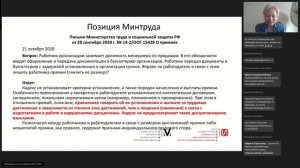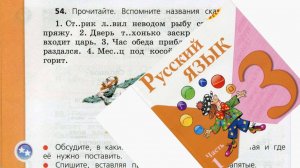
 1:11:44
1:11:44
2024-07-18 08:30

 1:13
1:13

 1:13
1:13
2025-09-25 18:03

 19:12
19:12

 19:12
19:12
2025-09-11 14:41

 1:55:45
1:55:45

 1:55:45
1:55:45
2025-09-16 20:14

 10:29
10:29

 10:29
10:29
2025-09-22 09:39

 1:57:38
1:57:38

 1:57:38
1:57:38
2025-09-15 15:22

 5:52
5:52

 5:52
5:52
2025-09-25 23:50

 8:30
8:30

 8:30
8:30
2025-09-12 15:00

 7:40
7:40

 7:40
7:40
2025-09-25 17:00

 2:15
2:15

 2:15
2:15
2025-09-25 22:19

 1:23:24
1:23:24

 1:23:24
1:23:24
2025-09-18 12:00

 10:11
10:11

 10:11
10:11
2023-10-29 12:11

 27:57
27:57

 27:57
27:57
2025-09-16 16:21

 1:50:16
1:50:16

 1:50:16
1:50:16
2025-09-15 14:19

 5:30
5:30

 5:30
5:30
2025-09-24 07:00

 16:17
16:17

 16:17
16:17
2025-09-17 18:32

 23:31
23:31

 23:31
23:31
2025-09-28 11:00

 3:20
3:20
![Cvetocek7 - Запретила (Премьера клипа 2025)]() 2:49
2:49
![Enrasta - За тобой (Премьера клипа 2025)]() 2:41
2:41
![Tamo ft Djan Edmonte - Ну что красавица (Премьера клипа 2025)]() 3:10
3:10
![Амина Магомедова - Не пара (Премьера 2025)]() 3:40
3:40
![Gulinur - Nishatar (Official Video 2025)]() 3:40
3:40
![Вусал Мирзаев - Слов не надо (Премьера клипа 2025)]() 2:19
2:19
![NIKA DUBIK, Winter Spirit - Искры (Премьера клипа 2025)]() 4:27
4:27
![Мухит Бобоев - Маликам (Премьера клипа 2025)]() 3:18
3:18
![Гайрат Усмонов - Унутаман (Премьера клипа 2025)]() 5:17
5:17
![Григорий Герасимов - Сгоревшие мосты (Премьера клипа 2025)]() 3:05
3:05
![Бобур Ахмад - Куролмаслар (Премьера клипа 2025)]() 3:33
3:33
![Тахмина Умалатова - Не потеряй (Премьера клипа 2025)]() 4:10
4:10
![Абдуллах Борлаков, Мекка Борлакова - Звездная ночь (Премьера клипа 2025)]() 4:25
4:25
![Азамат Ражабов - Нигорим (Премьера клипа 2025)]() 3:52
3:52
![Иброхим Уткиров - Коракуз (Премьера клипа 2025)]() 4:28
4:28
![МАРАТ & АРНИ - Я ЖЕНИЛСЯ (Премьера клипа 2025)]() 4:16
4:16
![Magas - Только ты (Премьера клипа 2025)]() 3:04
3:04
![Равшанбек Балтаев - Кастюм (Премьера клипа 2025)]() 3:59
3:59
![Игорь Балан - Белая зима (Премьера 2025)]() 3:10
3:10
![Alex Lim, Игорь Крутой - Вокзал (Премьера клипа 2025)]() 3:32
3:32
![Девушка из каюты №10 | The Woman in Cabin 10 (2025)]() 1:35:11
1:35:11
![Властелин колец: Возвращение бомжа | The Lord of the Rings: The Return of the King (2003) (Гоблин)]() 3:21:07
3:21:07
![Не грози Южному Централу, попивая сок у себя в квартале | Don't Be a Menace to South Central (1995) (Гоблин)]() 1:28:57
1:28:57
![Грязь | Filth (2013) (Гоблин)]() 1:37:25
1:37:25
![Большой Лебовски | The Big Lebowski (1998) (Гоблин)]() 1:56:59
1:56:59
![Только ты | All of You (2025)]() 1:38:22
1:38:22
![Чёрный телефон 2 | Black Phone 2 (2025)]() 1:53:55
1:53:55
![Шматрица | The Matrix (1999) (Гоблин)]() 2:17:10
2:17:10
![Криминальное чтиво | Pulp Fiction (1994) (Гоблин)]() 2:32:48
2:32:48
![Школьный автобус | The Lost Bus (2025)]() 2:09:55
2:09:55
![Большой куш / Спи#дили | Snatch (2000) (Гоблин)]() 1:42:50
1:42:50
![Большое смелое красивое путешествие | A Big Bold Beautiful Journey (2025)]() 1:49:20
1:49:20
![Фантастическая четвёрка: Первые шаги | The Fantastic Four: First Steps (2025)]() 1:54:40
1:54:40
![Диспетчер | Relay (2025)]() 1:51:56
1:51:56
![Рок-н-рольщик | RocknRolla (2008) (Гоблин)]() 1:54:23
1:54:23
![Мужчина у меня в подвале | The Man in My Basement (2025)]() 1:54:48
1:54:48
![Дом из динамита | A House of Dynamite (2025)]() 1:55:08
1:55:08
![Карты, деньги, два ствола | Lock, Stock and Two Smoking Barrels (1998) (Гоблин)]() 1:47:27
1:47:27
![Цельнометаллическая оболочка | Full Metal Jacket (1987) (Гоблин)]() 1:56:34
1:56:34
![Стив | Steve (2025)]() 1:33:34
1:33:34

 3:20
3:20Скачать видео
| 256x144 | ||
| 640x360 | ||
| 1280x720 | ||
| 1920x1080 |
 2:49
2:49
2025-11-04 17:50
 2:41
2:41
2025-11-07 14:04
 3:10
3:10
2025-11-07 13:57
 3:40
3:40
2025-11-05 00:22
 3:40
3:40
2025-10-31 13:38
 2:19
2:19
2025-11-07 14:25
 4:27
4:27
2025-10-31 16:00
 3:18
3:18
2025-11-02 10:30
 5:17
5:17
2025-11-06 13:07
 3:05
3:05
2025-11-06 12:13
 3:33
3:33
2025-11-02 10:17
 4:10
4:10
2025-11-06 11:31
 4:25
4:25
2025-11-07 13:49
 3:52
3:52
2025-11-07 14:08
 4:28
4:28
2025-11-03 15:38
 4:16
4:16
2025-11-06 13:11
 3:04
3:04
2025-11-05 00:49
 3:59
3:59
2025-11-04 18:03
 3:10
3:10
2025-11-07 14:48
 3:32
3:32
2025-10-31 15:50
0/0
 1:35:11
1:35:11
2025-10-13 12:06
 3:21:07
3:21:07
2025-09-23 22:52
 1:28:57
1:28:57
2025-09-23 22:52
 1:37:25
1:37:25
2025-09-23 22:52
 1:56:59
1:56:59
2025-09-23 22:53
 1:38:22
1:38:22
2025-10-01 12:16
 1:53:55
1:53:55
2025-11-05 19:47
 2:17:10
2:17:10
2025-09-23 22:53
 2:32:48
2:32:48
2025-09-23 22:52
 2:09:55
2:09:55
2025-10-05 00:32
 1:42:50
1:42:50
2025-09-23 22:53
 1:49:20
1:49:20
2025-10-21 22:50
 1:54:40
1:54:40
2025-09-24 11:35
 1:51:56
1:51:56
2025-09-24 11:35
 1:54:23
1:54:23
2025-09-23 22:53
 1:54:48
1:54:48
2025-10-01 15:17
 1:55:08
1:55:08
2025-10-29 16:30
 1:47:27
1:47:27
2025-09-23 22:52
 1:56:34
1:56:34
2025-09-23 22:53
 1:33:34
1:33:34
2025-10-08 12:27
0/0

